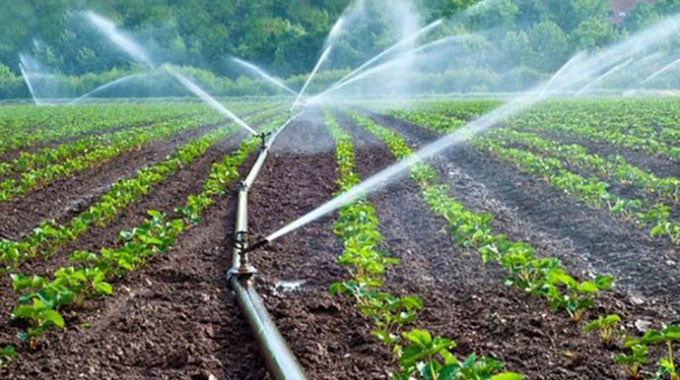
The ManicaPost

Samuel Kadungure Senior Reporter
THE vision to revolutionise agriculture through irrigation has greatly promoted sustainable livelihoods and food security in the country as climate change puts pressure on farming communities.
This thrust, at independence, hinged on exploring new irrigation technologies, expansion of existing irrigation facilities and the construction of dams.
One such initiative in Manicaland was the establishment of the Nyakomba Irrigation Scheme in Nyanga North, with financial support from the government of Japan.
Zimbabwe, together with irrigation experts from Japan, worked on the first and second phases of the project.
Japan injected nearly US$52 million into Phase 1 of the Nyakomba Irrigation Scheme, which saw the construction of Blocks B, C and D.
Block B benefited 128 farmers, with each one of them on a hectare, Block C (164 farmers on 0,7ha each) and Block D (238 farmers on 0,8ha each).
However, the expansion of Block A stalled due to lack of funding.
Regardless of that, the farmers ventured into maize, beans, wheat and Tabasco chillies production, among other crops.
Their livelihoods evidently transformed for the better, with rural poverty eradicated.
Their living standards immensely improved, with many being able to fend for their families and produce surplus to sell.
Fast forward to 2006.
Productivity at the scheme nosedived as the facility suffered chronic lack of maintenance following damages caused by the 2000 Cyclone Eline-induced floods.
Pumps and canal networks were now failing to deliver sufficient water to the farmers’ fields.
The viability of the scheme was affected by constant breakdowns of the old pumps and vandalised canals.
Crop yields and farmers’ incomes continued to dwindle, thus exacerbating rural poverty in this part of Nyanga North, which is prone to drought.
As a result, the rapidly growing population was once again food insecure.
Rainfall remained scarce. At most, the area would receive annual rainfall of 500mm. In addition, the high temperatures did not help matters as much of the rainfall was lost through evaporation.
Nyanga North is synonymous with exceptionally high summer temperatures, low humidity, high run-off and soil erosion.
These negative factors compromised crop productivity at the scheme as its vibrancy hinged on the strength of reliable moisture.
Yields therefore continued to decline.
At this point, it was crucial to come up with appropriate technology to spur productivity once again.
The big question was what were the possibilities of increasing crop production in the dry land without new sources of water?
Secondly, what were the possibilities of funding the rehabilitation of the existing facilities?
The project would include the construction of new pumping facilities, improving water level control, distribution and flow measurement.
New canal structures were therefore built, while existing ones were modified.
An overnight storage pond also had to be built while the existing pumps and flood protection structures for Blocks B, C and D pump stations needed to be replaced.
New irrigation infrastructure was installed on Block A (146ha) to increase the number of beneficiaries and reduce rural poverty.
As for the funding of the project, the country’s all-weather Japanese friends were more than ready to assist.
Therefore the Japanese Government, through the Japan International Co-operation Agency (JICA), injected US$15 million to breathe a new lease of life into the project.
Japanese engineers started working on feasibility studies and designs in 2015 before the rehabilitation and expansion of Nyakomba started in 2016.
Contractors worked day and night to beat the project’s timeline. President Mnangagwa finally commissioned the project on Wednesday.
The public-private partnership between Government and JICA has been effective in enhancing sustainable agriculture and national development.
While Zimbabwe’s agricultural sector has remained heavily reliant on the rains, the country is making steady progress in establishing irrigation facilities.
President Mnangagwa said Nyakomba is one of the most critical irrigation schemes in the country, whose modernisation and expansion will increase productivity.
“When we toured the project, we saw men and women working on their pieces of land.
“The project is targeting export markets, so I had to see where they produce and process (red) chilli. They export it to America, where they are paid in US dollars,” he explained.
The future is indeed brighter for the households at the facility.
The President said the farmers had told him that they earned in excess of US$1 000 from produce grown on their 0,2 hectare pieces of land. Government, the President said, is prioritising the construction of dams and drilling of boreholes with a view of putting an extra 100 000 hectares under irrigation in the next three years.
This initiative will be implemented countrywide. Zimbabwe has the capacity to irrigate 2 244 800 hectares.
Despite the existing enormous irrigation development potential in the country, only 206 000ha is currently equipped. Of these, 154 500ha fall in the commercial sub-sector, while 51 500ha fall in the communal sub-sector. The communal irrigation sub-sector is the most affected with less than 65 percent of its schemes fully functional.



